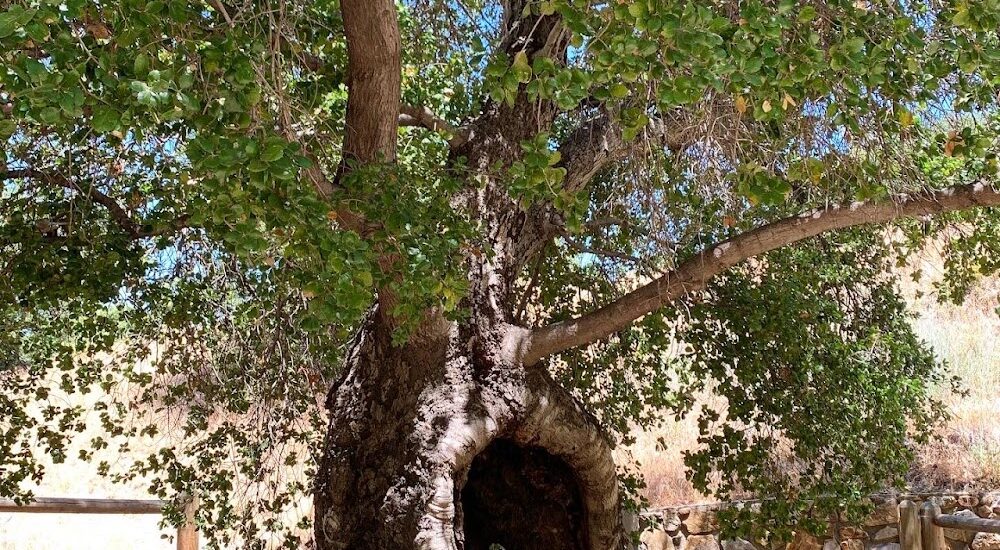Welcome to the Oak of the Golden Dream, a site with roots deep in California’s rich history. Nestled within Placerita Canyon in Santa Clarita, this landmark is where the first documented discovery of gold in California took place. Let’s step back in time to the year 1842. It was here under the shade of this very oak tree that Francisco Lopez, while on a cattle herding mission, stopped to rest. According to local legend, Lopez dreamed of floating on a pool of gold and upon waking, discovered gold flakes clinging to the roots of wild onions he uprooted nearby. This discovery predates the more famous gold rush at Sutter’s Mill by six years, marking the beginning of California’s gold fever.
The discovery at the Oak of the Golden Dream set off a small gold rush in the area, drawing in prospectors, particularly from the Mexican state of Sonora. While the rush was modest compared to later events, it represented the first wave of gold fever in the state.
The oak tree and its surrounding area have since been preserved as a California Historical Landmark, recognizing its significance in the broader narrative of the state’s history. This humble tree bore witness to the early days of California’s transformation, as gold mining kicked off a series of events that would eventually lead to the state’s rapid growth and development.
Today, the oak stands not only as a symbol of California’s early gold discoveries but also as a reminder of the natural beauty and rich history of the area. Visitors can walk the trails of Placerita Canyon, imagining the hopeful prospectors who once tread these grounds, dreaming of fortunes to be found.





